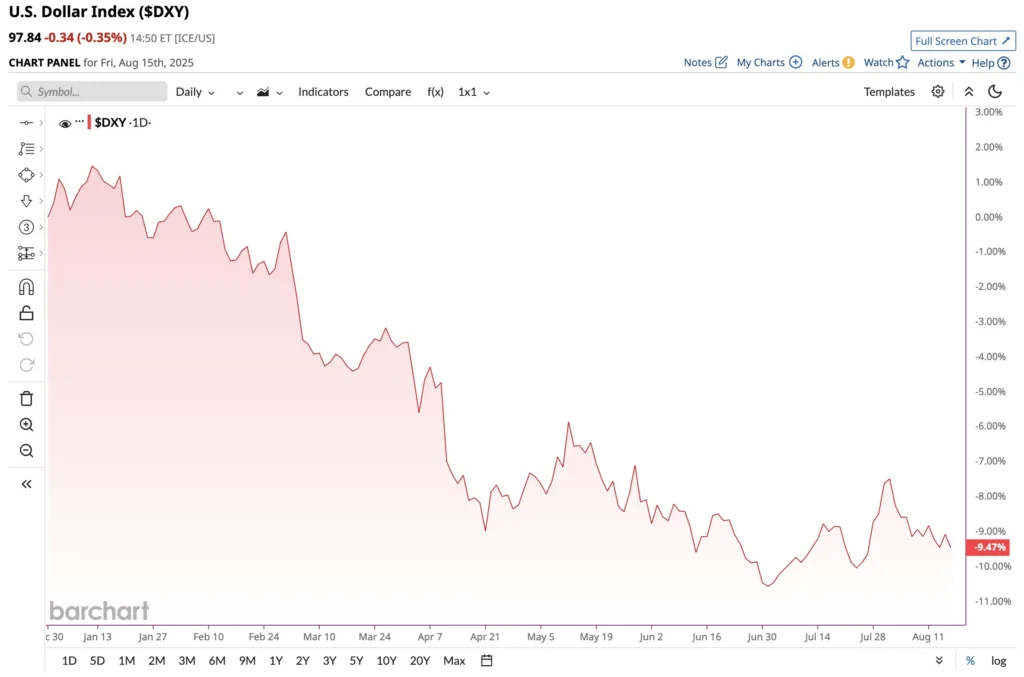
The U.S. Dollar Index had one of the biggest falls in recent times in 2025, dropping 9.5%. Increased global recovery, budgetary challenges, and policy shifts are all part of contributing factors to the fall, which is indicative of a shift in investor mood. In addition, the fall has triggered shifts in the forex market as well as increased anxieties regarding the health of the global economy.
Is the Fall of the U.S. Dollar Index Temporary?
Both monetary and fiscal issues contributed to the decline of the dollar. The Federal Reserve pivoted to rate cuts to counter slower growth. The yield edge that had previously drawn in global investors is eliminated to achieve this. Thus, capital shifted to other markets since U.S. assets were yielding lower returns.
With concerns about the federal debt’s stability growing, investors took cover in other currencies. At the same time, more robust bounces in Europe and Asia, where central banks had tighter policies, diverted money away from the United States.
The forex market was affected by this weakness. Significant currencies such as the euro, yen, and pound rose due to declining debt burdens. Despite this volatility due to the swiftness of these movements, it pushed businesses and investors to use stronger hedge tactics.
Can the U.S. Dollar Index Recover?
The dollar is consistently under pressure, as seen in the 2025 chart. The index started in January nearly unchanged, but it fell sharply through April. Additionally, it is crossing below significant support levels, a sign of significant market anxiety.
From May through July, the dollar experienced brief recoveries. However, as sellers took control, each rally soon lost steam, indicating weak investor sentiment. Thus, the lack of robust buying interest in the currency was brought to light by these unsuccessful recoveries.

At 97.84 in August, the index had fallen 9.5% for the year. Fears about the deteriorating U.S. fiscal position and interest rate differentials with competitive economies were behind the decline. In addition, the repeated depreciation has rekindled debate over the long-term role of the dollar in the global economy.
U.S. Dollar Index Decline Shaping New Market Dynamics
The prolonged recession is changing capital flows, commodities, and trade. A falling dollar has boosted the competitiveness of U.S. exporters’ goods abroad, which has benefited them. However, it has also increased import costs, increasing domestic inflation risks. Additionally, commodities like gold and oil have increased in value as a result of the weaker dollar.
The dollar’s decline has both advantages and disadvantages for the world economy. Lower debt servicing costs help emerging markets. However, concerns about the dollar’s continued dominance as a reserve currency are increasing.
Dollar’s Decline Signals Wider Shifts
The U.S. Dollar Index’s 9.5% decline indicates more significant shifts in global finance than just short-term weakness. While the United States is suffering from inflation and fiscal pressure, exporters do well. Moreover, the global economy can diversify away from the dollar even faster as the forex market adapts to the rising volatility. Consequently, barring reforms, the fall of the dollar will continue and alter cross-border capital flows.







